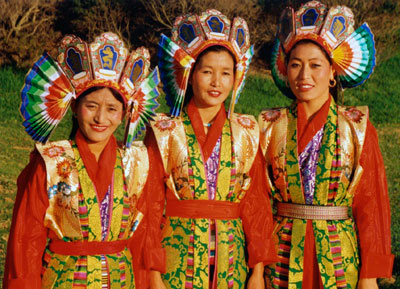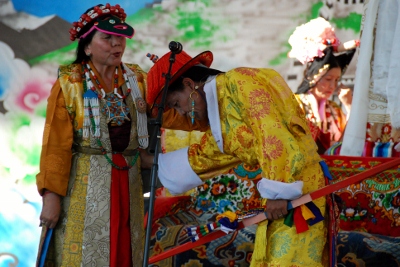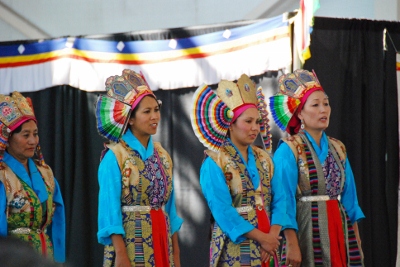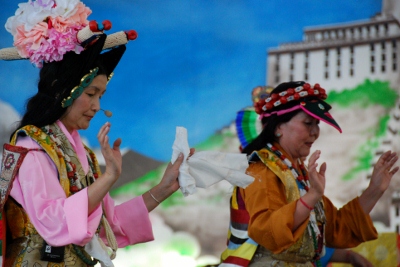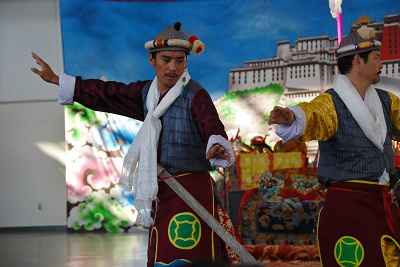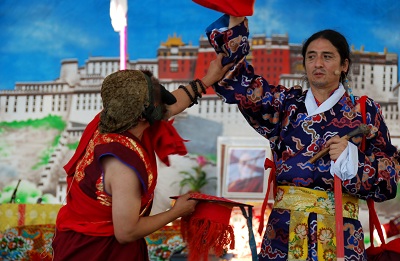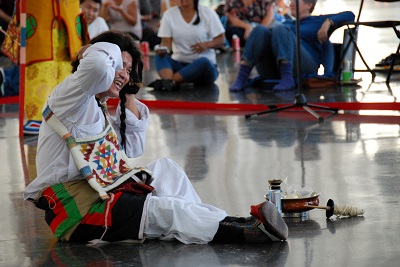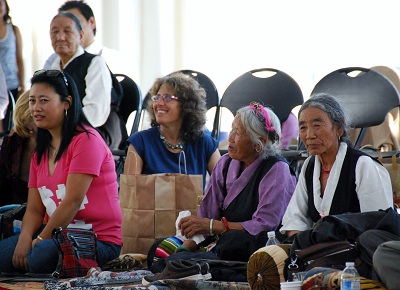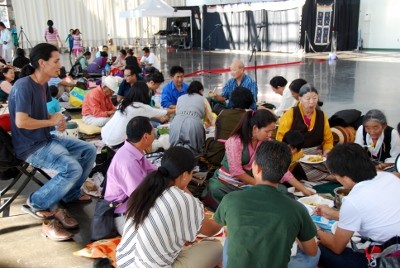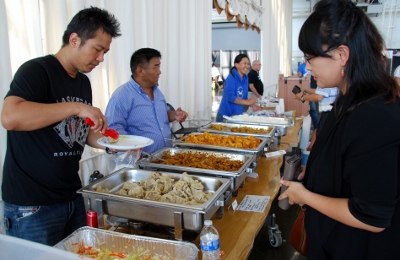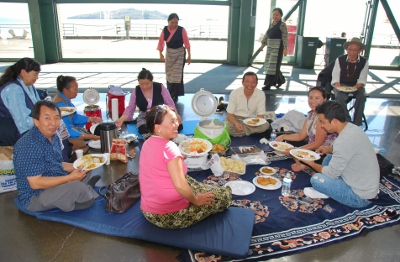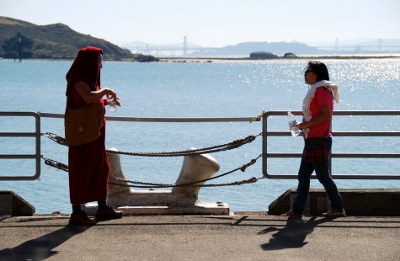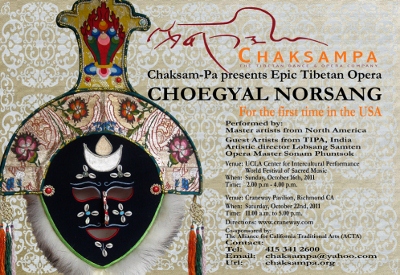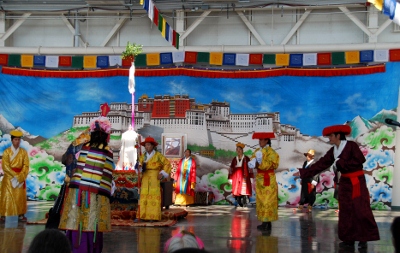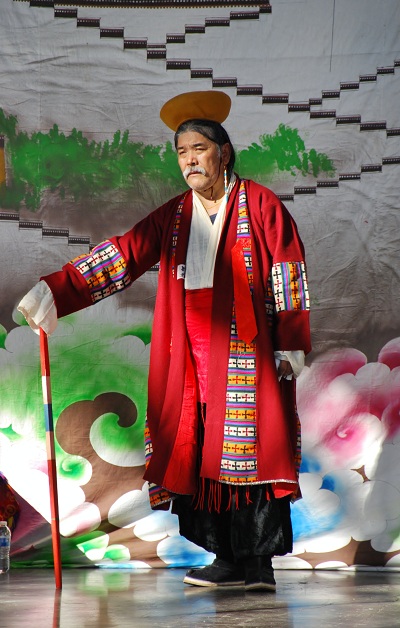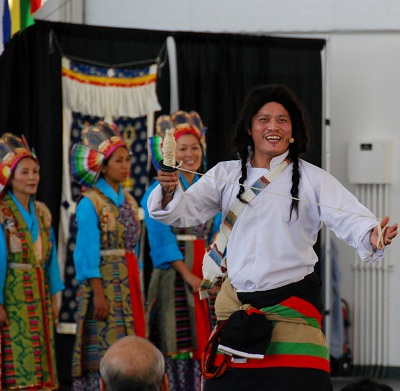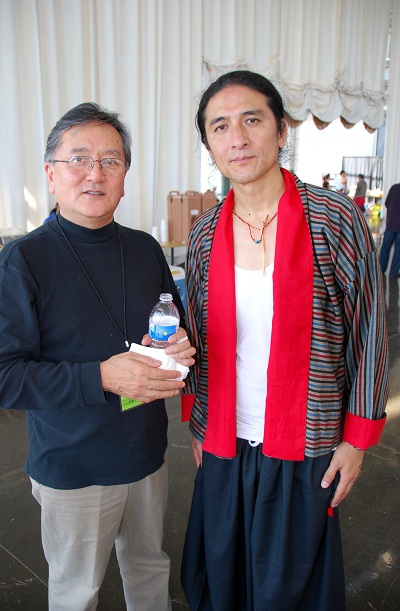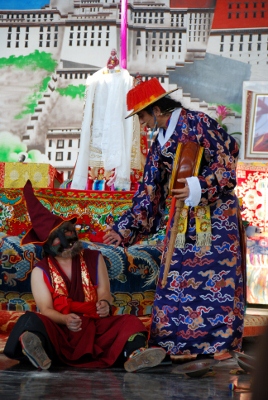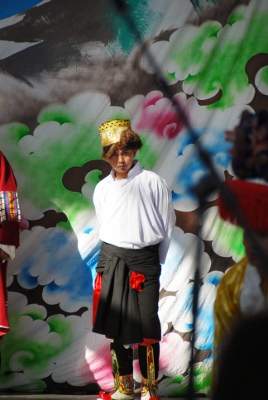Image from Promotional poster from the Celebration of the Tibetan Opera in the Ache Lhamo Tradition in the Bay Area, a Hewlett 50 Commission in the folk and traditional arts, 2022.
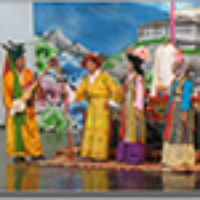
Chaksam-pa Tibetan Dance & Opera Company
Tibetan drama, music, and dance
Since the Chinese occupation of Tibet, the rich traditions of Tibetan music, dance, and drama have been suppressed. But the art survives, barely, in refugee settlements in India, and now, in the San Francisco Bay Area. In the Chaksam-pa Tibetan Dance & Opera Company, a small group of master performers have joined together to offer this unique art to a world audience in hopes of keeping it alive for another generation.
In Tibetan, Chaksam-pa means Bridge-Builder, and is one of the many names attributed to a famous Tibetan saint known as Thangtong Gyalpo, who lived in the 14th century in Tibet. He is considered to be a patron saint of Tibetan medicine as well as the founding father of Ache Lhamo, Tibetan opera. Legend has it that Thangtong Gyalpo recruited villagers and gathered support to build suspension bridges all over the wide Himalayan rivers in Tibet to allow pilgrims access sacred Buddhist sites. The bridges now built by Chaksam-pa Tibetan Dance and Opera Company are those of cultural exchange, sharing the unique but threatened traditions of Tibet with audiences and artists around the world.
Living Cultures Grant Program
2023
Training and Mentoring Young Artists on Tibetan Opera Skills
In 2023, a grant from ACTA’s Living Cultures Grants Program supported the training of young artists in traditional Tibetan opera, so they can participate in the organization’s opera performances.
2016
In 2016, a grant from ACTA’s Living Cultures Grants Program supported a recording project that will bring master artists together to document and archive Gorshey, a traditional Tibetan circle dance. A 2019 Living Cultures Grant will support a collaboration with Kongpo elders to transcribe and publish traditional songs.
2012
In 2012, with support from ACTA’s Living Cultures Grants Program, a full length ache lhamo or Tibetan opera will be produced in July to coincide with a three-day gathering of Tibetan families from the West Coast in honor of the birthday of the Dalai Lama. Performers, under the artistic direction of Tsering Wangmo, will include alumni of the renowned performing arts conservatory, The Tibetan Institute of Performing Arts in Dharamsala India and are considered some of the finest artists in their generation, now living throughout the Tibetan diaspora.
2011
In 2011, funds from ACTA’s Living Cultures Grants Program supported the presentation of the first-ever U. S. production of a traditional Tibetan opera known as ache lamo. Culture bearer and lead artist Tsering Wangmo writes, “In Tibet, this day-long event would be performed outdoors under a tent and is attended by families in traditional dress who share picnics of favorite foods. People wander in and out of the tent to watch the most beloved parts of the opera which tell tales of religion, morality, good, and evil.” The production brought artists who live in North America to the Bay Area in October 2011 to present ache lamo, now rare in Tibet. The growing Tibetan community is now three generations strong, but young people have not had the opportunity to see this rare tradition.
2009
As a grantee of ACTA’s Living Cultures Grants Program in 2009, Chaksam-pa Tibetan Dance & Opera Company received support for their 20th anniversary celebration performance.

